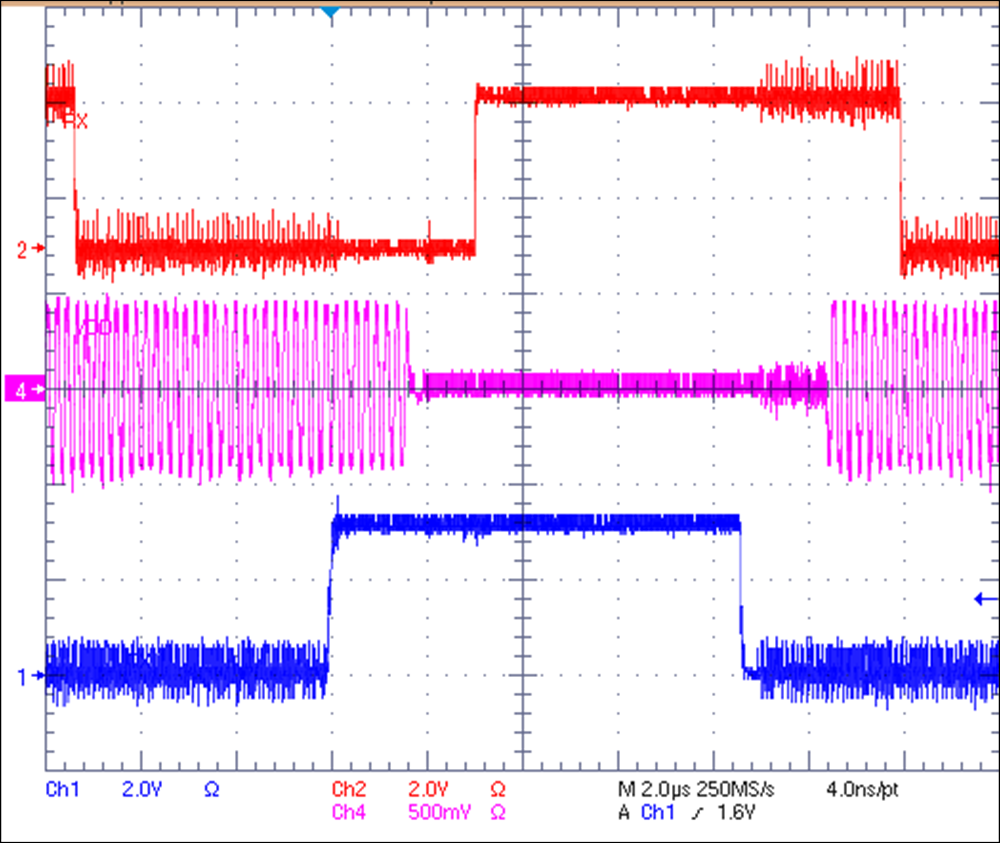SLLA573 May 2022 THVD8000
2.4 Test 4: 4-Node Loaded and Terminated Star Network Test with Line Driver
Next step of system improvement is to support such multiple-node system with a low-impedance load. To increase the signal’s noise margin, a high-speed amplifier is added after the THVD8000 to drive the bus as shown in Figure 2-9. Here a differential amplifier, THS6222, is chosen and powered by a 12-V supply. Based on the data sheet, this amplifier output impedance is 0.01-Ω at 1-MHz and the device has 195MHz large swing bandwidth. To prove the idea, only one THS6222 is added at Node 1, while the THVD8000 directly receives the signal in the other three receiving nodes. In proper system design, THS6222 is inserted into the signal path in the drive mode and bypassed in the receive mode.
With the help of the THS6222, the drive capability is increased significantly. Comparing Figure 2-10 to Figure 2-8, the amplitude of bus signal is increased more than two times. Similarly, the GUI reports are skipped here. Since THVD8000’s pin has the +/-15 V abs max, the receiver has no problem working with large swing signal generated by the high-speed amplifier. Again, this setup represents a 40-node star network system, meaning the implementation has the potential to work with various other topologies.
 Figure 2-10 Waveforms of the 4-Node Loaded
and Terminated Star Network with Line Driver
Figure 2-10 Waveforms of the 4-Node Loaded
and Terminated Star Network with Line Driver